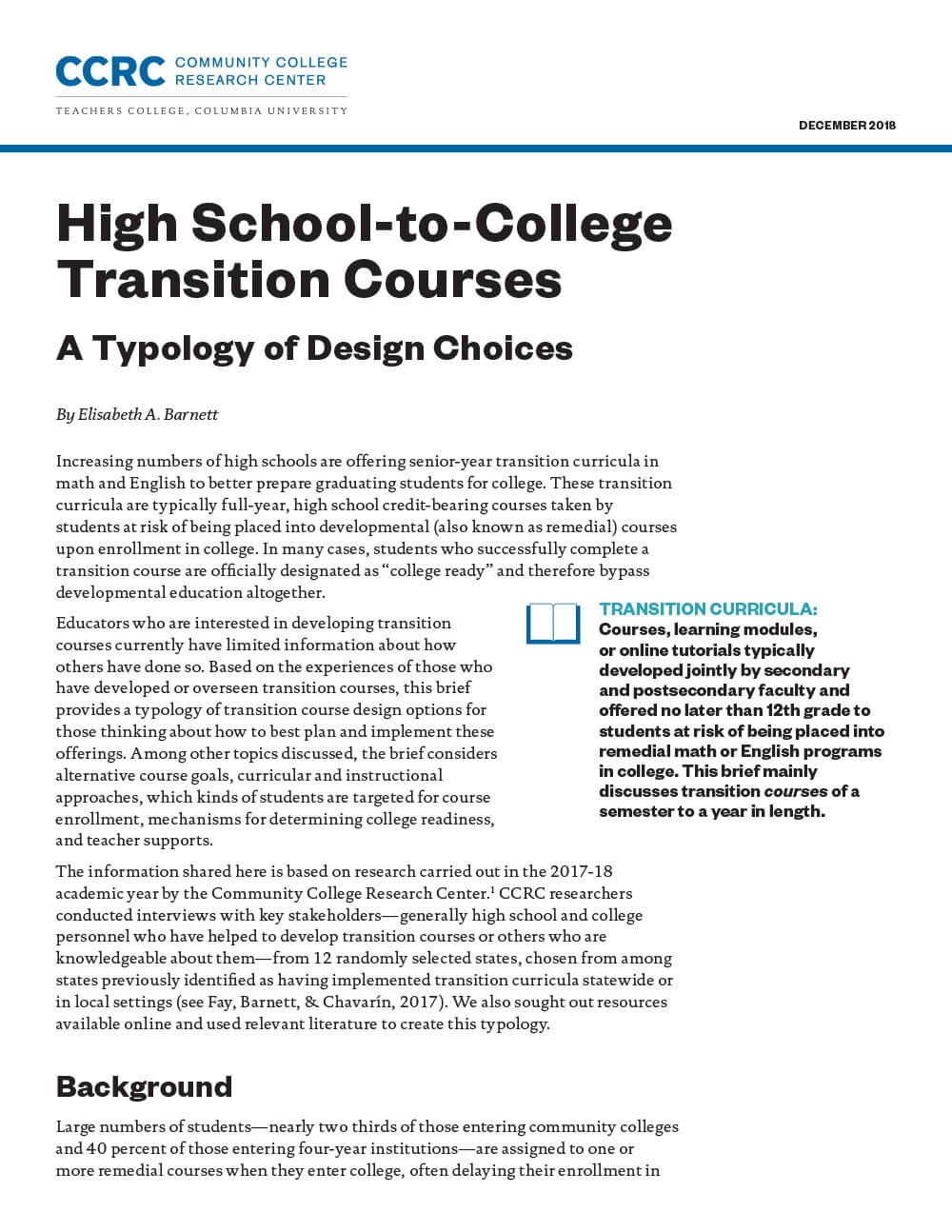
In growing numbers, high schools across the country are offering transition curricula to boost college readiness. The courses target students at risk of being placed in remedial math or English programs in college, and they aim to address knowledge and skills deficits so learners can avoid remedial education altogether. Designing and implementing such courses can be challenging, particularly as there is little guidance for doing so. This short publication offers an overview of what’s been done before to help practitioners consider a host of choices that need to be made in developing such a course.
The publication is informed by interviews conducted by CCRC researchers with key stakeholders in 12 randomly selected states in which transition courses have been developed and are offered. The author outlines a dozen design options about course purpose, content, delivery, organization, structure, and context, and illustrates how and why developers in particular states have made particular choices. The author concludes with information on emerging trends in postsecondary reform that are related to transition curricula, including greater reliance on multiple measures assessment and placement and the “guided pathways” movement.
